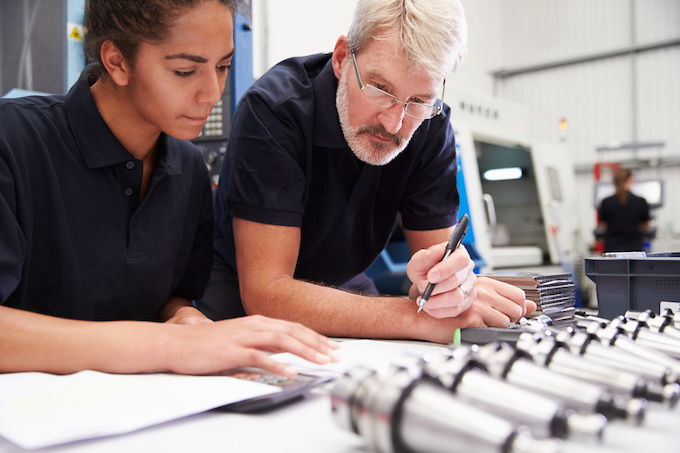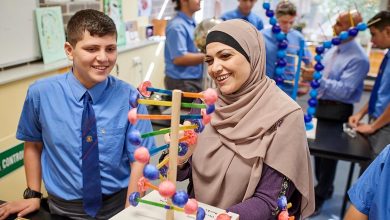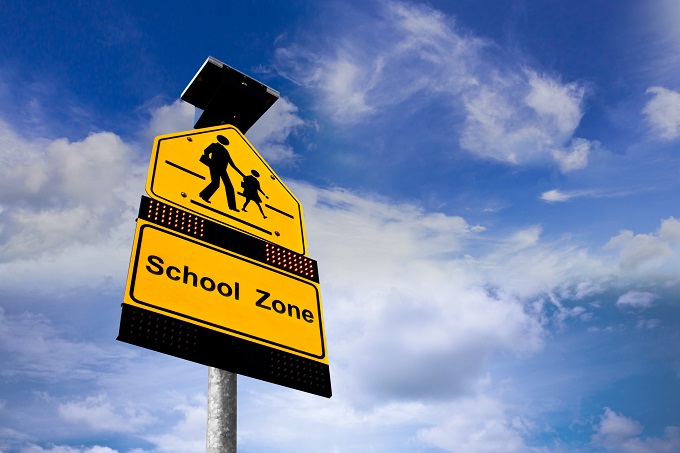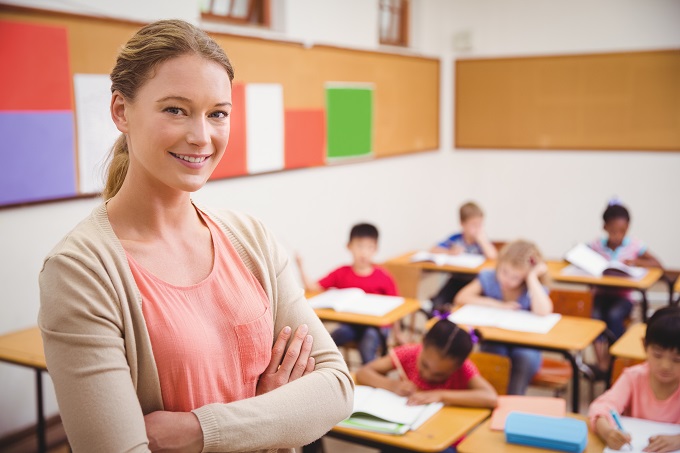
Sir Ken has often said, “teaching is an art form, not a delivery system” and with more Australian educators turning to ‘clinical teaching’ (the process of overlaying clinical practice onto teaching practice to assess and ensure teaching practices have an impact), it seemed pertinent to ask Sir Ken if there’s room in creative teaching for science and art.
“We make too much of a difference between science and art,” he replied. “It’s often assumed that to be a teacher you just need a good degree in whatever it is you are being paid to teach, but it’s simply not true, it was never true.”

He says, while “a great teacher obviously knows their material”, the real skill is “engaging people in the material” and “firing up their imaginations”.
“Great teachers are like great doctors or lawyers. They have a whole reparatory of skills; techniques and approaches, and a lot of experience, but the real skill is knowing which skill to apply where, and how to adapt it to the people in front of you.”
He explained that great teaching is about “judgement and connoisseurship”, and while gathering relevant data means “you can be objective about what you’re doing”, he posited that education “has become far too data driven”, sidelining teachers’ judgements.
“It’s like a medical examination happening with data being generated, while the patient is dying on the table. You need to make sense of the data, so you can apply it to the situation you’re confronted with – here and now.”
Sir Ken says he doesn’t see instruction as a separate science. He said, “there are elements of teaching that can be learned that are skilful and informed by experience and information, but it shouldn’t be reduced to some sort of algorithm”.
Sir Ken is not against all forms of standardised testing. “There are some areas where it’s perfectly legitimate, like with language learning”.
“There are all sorts of things that go on in schools that depend on human contact. Contact with individual teachers, your interaction within the school community, and your links with the broader community. None of them is more important than another.”
“Having a rich curriculum and having expert, well supported teachers; having informed assessment, and having links with the greater community is what makes a great school.”
Sir Ken often speaks about “organic systems” being key for situations involving people. “Education is more like gardening than manufacturing: the thing is that gardeners know that there are conditions under which plants flourish and that’s true of all human communities – what it comes to is the culture of the place,” he reasoned.
Creative schooling: the wider view
Sir Ken maintains that his approach to education is neither hypothesis nor theory: “I’m simply describing what happens to be the case when you go into schools. If there’s a rich curriculum, if there’s interactive teaching, if there are close links with the community, kids flourish. If they’re sitting at desks all day having the life tested out of them, they don’t.”
So, what can be done?
He suggests persuading policy makers, “who are setting the tone from above” that “standardised testing, narrowing the curriculum and imposing more conformity are actually counter-productive in their own terms” must be part of the discourse to influence the political conversation.
“A lot of things get in the way of students and teachers realising their potential: one is the great pressure of testing, and there’s every reason to push back. One of the reasons I wrote my new book, You, Your Child and School, is because parents are disaffected about testing and they are pushing back too – and I’m keen to encourage them because it’s counterproductive and doesn’t serve anybody,” he noted.
While the cogs turn at the usual pace of an institutionalised system, I wondered how school leaders can support teachers within their own micro-society to enact the ‘education revolution’. Sir Ken began with defining the difference between learning, education and school.
“Children love learning; they learn voraciously. They don’t all get on with education and some of them have a bad time with school. The difference is that learning is a natural process of acquiring skills and understanding; education is a more organised approach to learning, a more formal approach very often; and school is a community of learners.”
Building innovative culture:
‘ask forgiveness, not permission’
“We’ve come to think of schools as particular sorts of places, with their own habits and rituals and routines, but schools don’t have to be the way we think they are.”
“There are all kinds of institutional habits and expectations that have gathered around schools, which are often obstructing learning and stifling the enthusiasm and curiosity on which great education depends.”
“Principals have a great opportunity – I know there are often oppressive political pressures on schools, but as well as pushing back against some of these harmful pressures, there’s also room for change within schools – even within the systems. A lot of what goes on in schools isn’t mandated; it’s just habit. And if we start to reimagine how schools work, you tend to see bigger improvements in the quality of teaching and learning than otherwise.”
He added that the marginalisation of programs in arts and humanities, PE and even playtime “in the interest of high stakes testing obsession” has resulted in “impoverished culture in education, which deteriorates people’s enthusiasm for learning”.
“There’s an awful lot that principals can do to rectify that, by looking at the balance of education and by getting to teachers to collaborate across disciplines.”
Sir Ken said, “change always happens from the ground up; it happens in real places with real people,” and he says principals can set the tone in their organisations to “shift the zeitgeist”. So how does this look in practice? He added that culture is about permission: it’s about ‘what’s ok’ and ‘what isn’t’ – and in some schools, leaders are facilitating a school culture where innovation is encouraged, “despite the prevailing political climate”.
“It’s happening because the leadership of the school is allowing people to try things differently. It’s about being prepared to make mistakes and try things out on the basis of trial and error, which is how innovation works.”
“It’s not about commanding control; it’s about climate control. If you’re able to set a different series of boundaries in schools and give people permission to try things, they will.
“There’s a lot of creative energy in schools that we are not tapping into, and if we start from the premise of ‘schools as a community of learners’ and then decide what type of community it should be, we can strip away things that may be preventing it being that way, because they are mainly conventions we’ve become used to, they’re not laws that we have to obey.”
A case for collaboration
As an advocate of collaborative teaching, Sir Ken says there’s plenty to be gained from eschewing the strict demarcation between disciplines in high school and pooling expertise. He admitted that “people get the shivers when you talk about collaboration because they think it automatically means ‘team teaching’, which it may or may not”, but he argued that “outside of schools, most collaborative work normally comes from people crossing disciplines and sharing expertise”.
“My experiences have shown me that, in education, the more people get to understand each other’s disciplines, the more fertile and productive the conversation tends to become. There are lots of ways that joint projects and cross-disciplinary work can excite the imagination of teachers and students alike.”
If it’s hard to conceptualise how cross-discipline collaboration could possibly work across Sir Ken reminds us that when great things have been achieved, there has always been collective effort from people with diverse expertise. More importantly, these achievements have always been accomplished under “constraints” that were “accepted” and worked around. He reasoned that back when Kennedy committed the USA to putting a man on the moon by decade’s end, “nobody said, ‘Mr President, can you just move the moon a bit closer?’”.
“All innovation happens within constraints. Whether you’re writing a poem in iambic pentameter or building a bridge that spans a gorge, there are constraints. In education there are constraints, but that shouldn’t lead us to believe that there are no options other than the way we do things now and collaboration is one of the ways of overcoming them.”
He says another way is to cross age boundaries: “We tend to think, in schools, that we need to keep kids in segregated age groups, but we don’t do this anywhere else. Outside of schools, age groups mix naturally.”
“The third way is to look at the timetable. It tends to create a set of railway lines across the day, which people find hard to get off. It’s an arbitrary system that we divide the day up into 50-minute periods, punctuated by bells. We don’t need to do any of that; there are better ways of organising people’s time. In fact, we have the technology to give everyone an individual time table.”
The role of technology
in creative schooling
An article on the future of schools is bereft without the mention of technology and Sir Ken said, “there’s no question the internet is transforming education”. He identified Wikipedia as a fantastic resource. Far from the days and hours he spent at the library as a student, he says people now enjoy access to a rapidly growing culturally inclusive global encyclopaedia; “a collaborative enterprise, which is coalescing all that we understand and know, as a species”.
He acknowledged it contains errors, but said, “there are mistakes in most books and newspapers and the thing about Wikipedia is that it is self-searching, self-analysing and ruthlessly self-correcting”.
“The downside is the vast ocean of nonsense out there,” he conceded.
“There was a time when it was straightforward: some people wrote, there were some publishers and most people read what other people had written, it was one-way traffic.”
“Now, everyone is a publisher, writer and producer; everyone’s a consumer, and that’s good; everyone has potentially got a voice. The down side is people have to be even more ruthless in separating truth from nonsense.”
“That’s a big role for schools, it’s not enough to throw people at the internet and say, ‘go research something’. It’s even more important that we remain critical and use our sense of judgement.”
“The other big issue is the miasma of social media – it’s a complete misnomer – it’s an ironic title because they’re not social, for the most part. They’re antisocial.”
“Print and television was the same. There’s always a down side to mass communication, but the trick is to take control of them and to be moderate in how we use them. The answer is not to shy away from it, to just ignore the internet and technology would be ridiculous, but we do need strategies to help kids get the best of them and not get lost in them,” he advised.
A year ago, I asked Sugata Mitra what he thought we should keep from the old system, and he suggested the “memory of an incredibly primitive past” would suffice. Sir Ken was more positive: “There are great schools and wonderful teachers working in them, and kids who go to these schools and love and enjoy them.”
Sir Ken’s own schooling was a roaring success, but he has often attributed that to the individualised attention he received and his suitability to academic learning. He said, “I’m not arguing against any sort of academic work, it’s been wonderful for many, including me; it’s been a liberation”.
“The education system has been populated by people who have been wonderfully dedicated, often very gifted, and have transformed the lives of millions of people – but that doesn’t mean that it can’t be improved or that the political pressures on the schools are justified.”
So, it’s not a matter of throwing out the baby with the bathwater? “No, but it’s about finding out what the baby is, and what it is we are trying to protect,” he counselled.
Students of design at a university level are often introduced to a book called The Metric Handbook, which covers how body dimensions relate to ergonomics. The book covers how the bell curve is employed to determine standardised dimensions for items like tables and chairs, door height and width and so on. So how do we decide what size a ‘standard’ chair will be? Or a ‘standard’ sized school chair, more pertinently? It’s based on the bell curve, and the result is that a small cluster of people feels comfortable in their seats. The clusters on either side are uncomfortable, but they manage to cope, though not necessarily enjoy their time in the chair; and for the outliers, it’s a disaster.
What actually happens when education is designed using the same statistical approach? Does our education system only serve a small cluster of academically minded students? That is, those who are gifted both in the synthesis of large amounts of information and the forms of output that are typically tested; and are of a temperament that can manage large stints of desk work? If so, what happens to the second group? They might be called the coasters – they cruise along under the radar, manage the work, stay out of trouble. They survive schooling, but do they thrive? The outliers: these might be our ‘high/frequent flyers’, our drop-outs, and our sufferers of anxiety and mental illness, or even victims of suicide.
Sir Ken says part of the problem is that we’re working on a deficit model. “One of the consequences of having such a narrow view of ability in this testing mania is that it generates a very wide perception of inability.”
“Truthfully, I’ve never encountered anyone in my life who doesn’t have special needs, (some of them are social, some are psychological, and some are physical) – and the sooner we recognise this, the more healthy and humanitarian our education systems are likely to be.”








